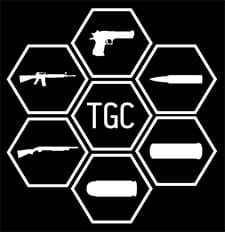
USA – -(Ammoland.com)- Welcome back to The Legal Brief, the show where we CRUSH the various legal myths and misinformation surrounding various areas of the gun world. I’m your host Adam Kraut and today we are discussing the Federal Court System.
Don’t forget, if you are attending the NRA Annual Meeting in Atlanta this year, and you need to, be sure to attend The Gun Collective Panel presented by NRA on Saturday April 29th at 1 PM. You’ll want to be on the third floor at Room B304 and 305 before we get started. The first 350 people are going to be receiving a small prize pack. We’re going to do a mountain of giveaways including some guns, NFA items and a bunch more. You can ask us anything you want and panelists include myself, Jon Patton, FourGuysGuns, Military Arms Channel, 22Plinkster, IraqVeteran8888 and more. Afterwards, there will be a meet and greet so you can hang out and take pictures with us because we want to meet every single one of you. I hope to see you there.
Recently, I discussed the 4th Circuit Court of Appeal’s abhorrent decision in Kolbe v. Hogan, where the Court en banc ruled that the Second Amendment did not protect “assault weapons” and “large capacity” magazines.
After the episode aired, a number of individuals asked about the Supreme Court hearing the case.
Shortly thereafter, Jon and I did a live stream on Facebook and I had asked if some civics lessons as to how certain branches of government operated would be useful in seeing the bigger picture. A number of you responded that it was something you wanted. So we’ll begin with the Federal Judiciary and for the purposes of our discussion, we’ll only be discussing the District Courts, Courts of Appeals and Supreme Court. There are others such as Bankruptcy Court, Tax Court, Court of Appeals for Veterans Claims and Court of Appeals for the Armed Forces but we won’t be discussing them. And as always, I’ll put links in the description.
Article III of the United States Constitution establishes the existence of a Supreme Court and gives Congress the authority to establish inferior courts. We can see that Congress has established 94 Federal District Courts and 13 Federal Courts of Appeals. At the bottom of the pyramid are the lowest level courts, which are the district courts. The Courts of Appeals are higher on the pyramid and incorporate a number of district courts within their jurisdiction. Lastly, at the top is the Supreme Court which has the final say on all of the matters brought to it from the Courts of Appeals.
Federal courts are able to hear matters which involve the United States as a party, violations of the Constitution or federal law, crimes on federal land, and bankruptcy cases. Additionally, federal courts are also able to hear cases involving parties from different states. Fun fact, this is called diversity jurisdiction. Now you have some knowledge for that weekly trivia you’re playing.
The district courts are where disputes are resolved through trials where evidence and witnesses are presented (if required or applicable). In some instances, like many of the cases I handle, cases are decided in a motion for summary judgment, where there is no dispute as to any material facts. This means there is no need for witnesses or evidence to be presented to a jury to decide whether a fact is true or untrue and the court can decide as a matter of law as to which side is correct. A decision rendered out of the District Court is only binding on that district. So for example, in Pennsylvania, where we have the Western, Middle and Eastern District Courts, a decision out of the Eastern District would only be binding on the Eastern District. However, it could be cited to as persuasive authority for cases being heard in other districts.

After a district court issues a ruling either party can appeal the decision to the Court of Appeals for that circuit. As you may remember from the discussion pertaining to the 4th Circuit Court of Appeal’s decision, each circuit court has a number of district courts under its authority. For example, cases decided in Federal District Courts of Maryland, North Carolina, South Carolina, Virginia and West Virginia are appealed to the 4th Circuit.
There is no re-trial at the Court of Appeals. It simply looks at the proceedings to see if they were conducted correctly, whether the applicable law was applied and if so, was it properly applied. Just a side note, if it is a criminal proceeding, only the defendant can appeal the decision.
Since the Courts of Appeals hear thousands of appeals a year and the Supreme Court only hears between 100 to 150 cases a year, often times the decision rendered by a Court of Appeals is the final say on the matter. Now as you may have guessed, a decision out of a Court of Appeals for a particular circuit is only binding on that circuit and lower district courts within that circuit. In rare instances, an opinion issued can be a non-precedential opinion, meaning it isn’t binding. Much like the district court decisions, Courts of Appeals can look to decisions rendered by other Circuits for persuasive authority. Which leaves the question, how is a case heard by the Supreme Court?
Unlike the Court of Appeals, where a right to appeal exists, the Supreme Court has discretion as to what cases it chooses to hear. Often times, the Supreme Court will wait until various Courts of Appeals have rendered differing decisions pertaining to an area of law before weighing in on the issue in order to provide uniformity across the system. In order for a case to be heard in the Supreme Court, a party must petition the court to grant a Writ of Certiorari.
A Writ of Certiorari is granted if four of the justices vote to hear the case. Those that are chosen to be heard by the Court are placed on the docket and briefing begins. After the briefing is completed, oral argument ensues. Each side has 30 minutes to present their argument but usually only get a few words out before being hammered with questions by the justices. After the completion of argument the case is decided in conference.
During the conference, which only the justices sit in, they discuss what cases to grant Certiorari to. After they’ve disposed of those matters, they then discuss the cases which were heard since the last conference, with the Chief Justice speaking first and then descending in order of seniority. After everyone has spoken they then vote in the same order as to the outcome. The most senior justice on the majority and dissenting group assign who writes the opinion for that group. If there is a tie in the voting, the lower court decision stands. And in case there was any confusion, opinions from the Supreme Court are binding on all of the lower courts including state courts, when it comes to the interpretation of federal law.
As you can see, the Court system is not as complex as one may have thought. You have smaller districts which are grouped together into bigger circuits and then the Supreme Court at the top. Decisions from higher courts are binding on lower courts and decisions from neighboring districts or circuits can be used as persuasive authority but are not binding on circuits or districts that they did not originate from.
Hopefully that gives you a better understanding of how the federal court system is structured. If you guys liked this episode, you know what to do, hit that like button and share it around with your friends. Have a question you want answered on this show, head over to The Legal Brief section on theguncollective.com. Be sure to check out my website adamkraut.com for more information on my quest to serve YOU on the NRA Board of Directors. Don’t forget to like The Gun Collective on Facebook, Instagram, YouTube, Full 30, Snap Chat and wherever else you can catch us on social media.
And as always thanks for watching!
Links for this episode:
- Article III of the United States Constitution
- Organization of Courts
- History of the Federal Judiciary – District Courts
- History of the Federal Judiciary – Courts of Appeals
- History of the Federal Judiciary – Supreme Court
About The Gun Collective
The Gun Collective is dedicated to bringing you the highest quality, fast-paced gun content possible. Started in June 2015 by Jon Patton, TGC has rapidly taken off to become a go-to source for the things you need to know without a bunch of BS. Please check out TheGunCollective.com to learn more and see what the hype is all about!
